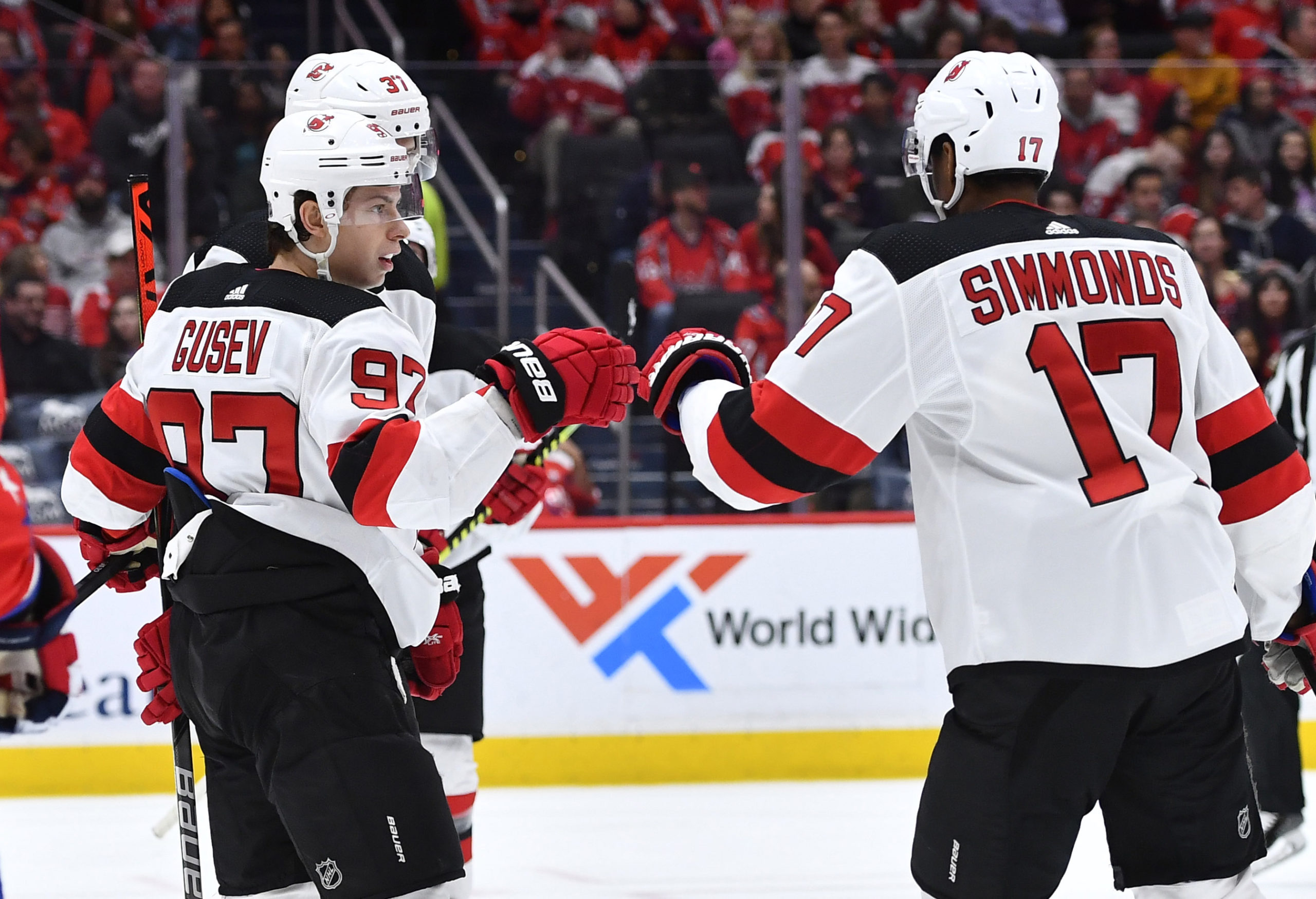On Friday, the Maple Leafs invited Russian winger Nikita Gusev to training camp on a Professional Tryout Agreement. The 28-year-old will likely battle alongside Michael Bunting, Nick Ritchie, Alex Kerfoot, Ondrej Kase, and others for a spot in the top six to the left of either Auston Matthews or John Tavares.
Gusev arrived in North America in 2019 with plenty of hype thanks to his godly KHL production, but his play in the NHL has clearly not lived up to expectations. His statistical profile in the NHL thus far (as illustrated by JFreshHockey) paints the picture of a one-dimensional playmaker who can’t finish his chances or offer any sort of value defensively:
Nikita Gusev, signed to PTO by TOR, is a one-dimensional offensive playmaking winger whose combination of horrible defensive play and non-existent finishing doomed his career with the Devils. #leafs pic.twitter.com/yEzWDhthXL
— JFresh (@JFreshHockey) September 17, 2021
After a brief look at that chart, it’s easy to question why GM Kyle Dubas and the Leafs staff wanted to give Gusev a look.
The Leafs, who have invested heavily in both analytics and general hockey research and development, are certainly aware of these numbers. They understand that Gusev has been underwhelming to this point in his career.
Most likely, the reason why they like the player is that they believe that there’s a chance they can help him unlock some of his untapped potential.
The Issue
A large part of the issue with Gusev stems from his poor posture.
Gusev struggles to generate proper knee flexion. He doesn’t “sit back” into his stride, and he overcompensates for this by bending his lower back too far forwards. His knees also tend to cave in and his toes splay outward.
Gusev’s poor posture affects him in many ways. His stride is short and choppy, causing him to lose races to pucks and to space. He struggles to protect the puck in tight quarters due to a lack of stability. His feet and hands are rarely in a shooting position when catching pucks, and he often requires some adjustments before taking a shot — buying enough time for opposing goaltenders to get set.
The winger has the vision, puck skill, and deception to be a strong playmaker even with these deficiencies. There is real top-six skill and hockey sense in his game.
To this point in his NHL career, though, the cons of his game have outweighed the pros.
“Unlocking” Nikita Gusev
This isn’t the first time Kyle Dubas and his front office have taken a chance on this player type.
The Leafs have drafted many prospects in the past few drafts that have the hockey IQ and puck skill to play but need serious work with a skating coach to make it to the next level.
At the NHL level, Alex Galchenyuk had a similar scouting report upon acquisition, and the Leafs did what they could to help him improve his game. The magnitude of Galchenyuk’s improvement was probably a bit overblown by Leafs fans on Twitter, but the Leafs did help him find his outside edge with greater consistency, and he was relatively productive for them in his short Leafs tenure.
Similarly to Galchenyuk, Gusev is no longer in his development years. At this point, it’s going to be quite tough to fix his posture as Gusev has obviously been playing this way for a long time. It’s hard to break habits that you have had for a very long time, and as a 28 year old with years of hockey-related wear-and-tear on his body, I’m sure Gusev’s hips and knees aren’t becoming a whole lot more flexible at this point in time.
However, the Leafs’ development staff has shown the ability to improve this type of deficiency in a player before, and Gusev is surely hungry to prove himself given that he is coming to camp without a guaranteed contract. Making the team and playing well with two of Auston Matthews, Mitch Marner, John Tavares, and William Nylander could save Gusev’s NHL career. Failing to do so would probably be the nail in the proverbial coffin.
Conclusion
A professional tryout offer is this as no-risk as it gets. Toronto isn’t risking anything here, and while it is a long shot, there is upside to be had if things fall nicely into place. Gusev will either be cut from camp without a contract offer, or he’ll make the team and sign what will likely be a cheap, short contract that would be easy to bury should things not work out.
The Leafs love to make little gambles like this (see: Alex Galchenyuk, Josh Ho-Sang, etc) and while most will never amount to anything, eventually one will probably hit in some sort of worthwhile way. Low percentage swings, if they carry no risk factor, are much better than taking no swings at all.
Let’s see what happens this time around.































![New Leaf Anthony Stolarz on the opportunity in Toronto: “In Florida, I knew my role as a backup… Now, [Joseph Woll] and I are competing for starts… As a goalie, that’s all you can ask for” Anthony Stolarz, Stanley Cup win, now Maple Leaf](https://mapleleafshotstove.com/wp-content/uploads/2024/07/anthony-stolarz-sc-100x70.jpg)
